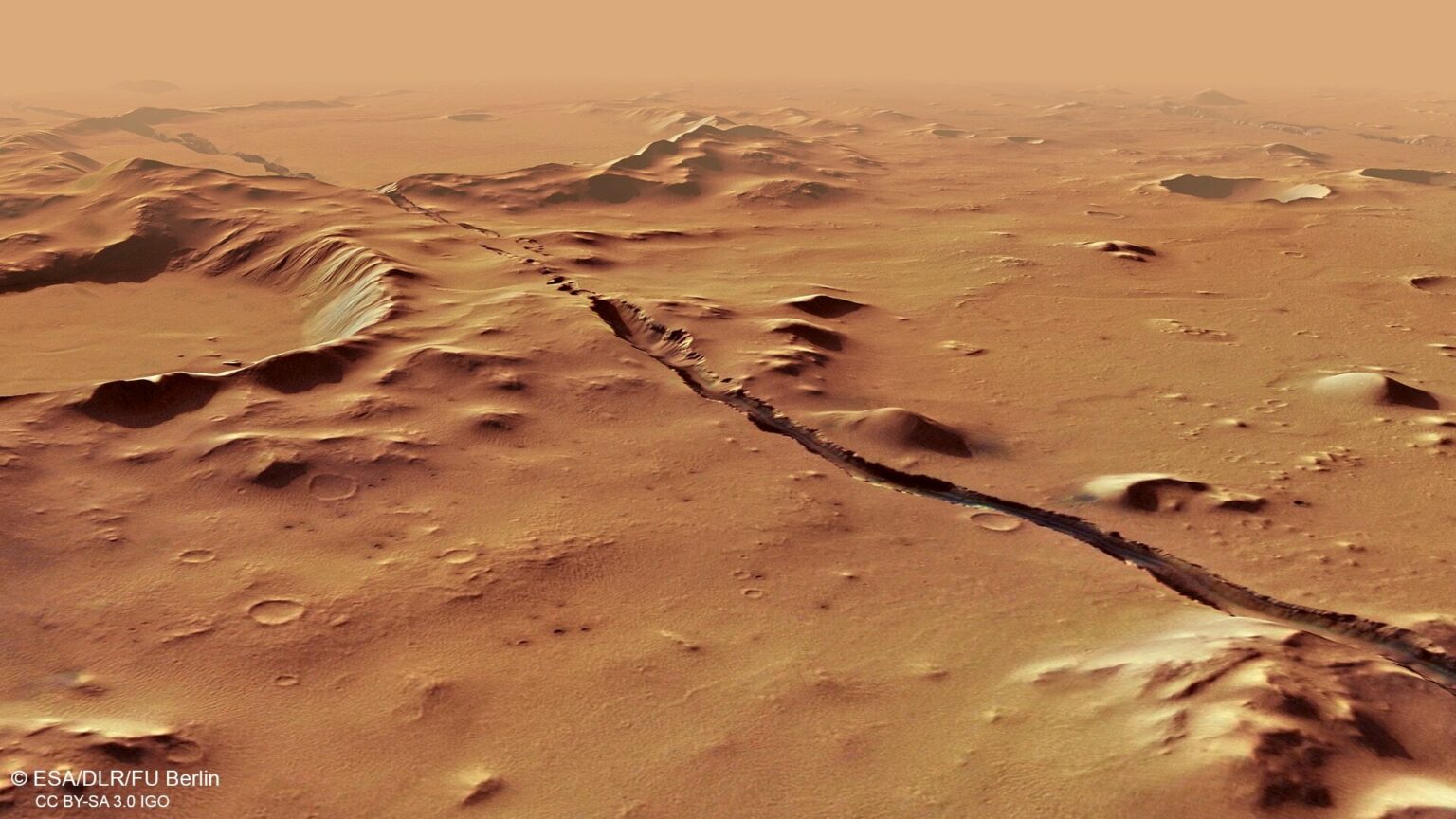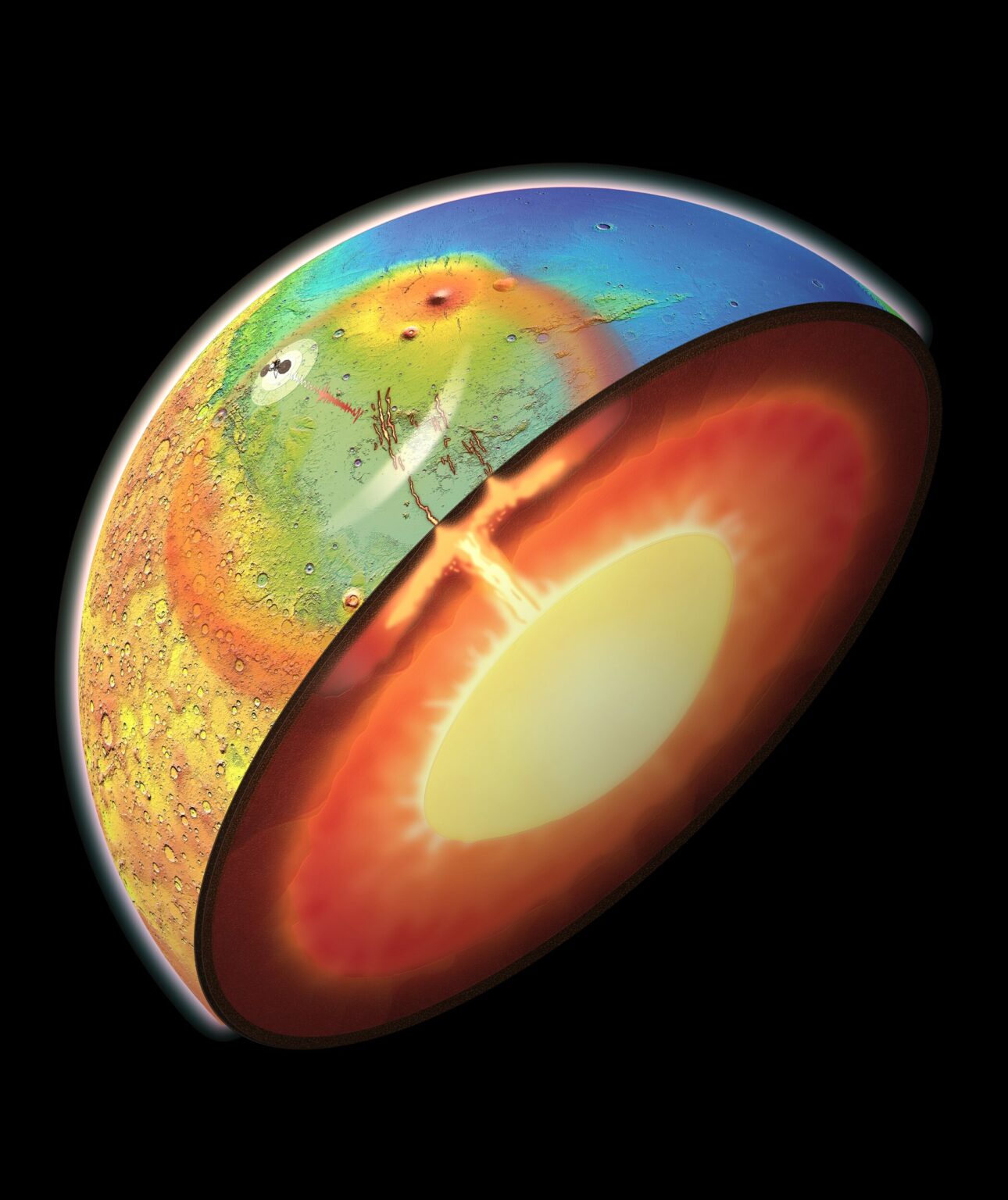Scientists analyzing seismic data from the InSight probe on the surface of Mars are convinced that a mantle plume is rising in the depths of the planet. This is the name of a dense and hot stream of matter rising from the core to the surface, melting its crust.

Geological activity of Mars
There is no tectonic activity on Mars, that is, its crust is not divided into separate plates sliding along the mantle and touching each other. From this, scientists have long concluded that from a geological point of view, the planet is dead.
Data from the Insight probe seismograph, which has been operating on the red planet for several years, show that quite strong marsquakes occur on it from time to time. For a long time, scientists believed that some local phenomena could be the reason for this.
However, recently, scientists from the University of Arizona have published evidence in Nature Astronomy in favor of the fact that a mantle plume is hiding in the depths of Mars, and it is responsible for all the marsquakes.
Mantle plumes on different planets
A mantle plume is a very hot and dense clot of matter from the outer core of a planet, slowly rising through its mantle. When it gets close to the crust, it starts melting it. Volcanoes may appear in particularly hot spots, even if there is no junction of lithospheric plates in this place.

On Earth, the most striking example of mantle plume activity is the Hawaiian Islands. One of the largest volcanoes in the world, Mauna Loa, is located on one of the islands of this archipelago and is currently erupting under the influence of forces that are hidden deep under the surface of the planet.
In addition, evidence of volcanic plumes exists on Venus. But with regard to Mars, there was still confidence that 3-4 billion years ago similar phenomena were observed in its mantle, traces of which were the highest volcanoes in the Solar System. But since that time, the activity of the planet’s core has dropped to zero.
Elysium Planitia
But the researchers have drawn attention to one region of Mars that opposes this thesis. We are talking about the Elysium Planitia. It is reliably known that, unlike the rest of the planet’s surface, magmatism has been occurring here for the last 200 million years. In particular, about 53 thousand years ago there was an explosion that covered the surface with a layer of volcanic ash.
The epicenter of this activity is considered to be the Cerberus Fossae – a series of young cracks extending for almost 800 km. The surface of the planet in this place has risen by more than 1.5 km. At the same time, the bottom of the craters turned out to be inclined in a certain direction.
All these are characteristic signs of a mantle plume pushing towards the surface. In total, it affected an area the size of the United States, and experts estimate its size at 2500 km. And this changes a lot, not only in terms of the fact that Mars can no longer be considered geologically dead.
After all, the existence of water ice has been confirmed on the Elysium Planitia. And the heat of the mantle plume may well melt it. Together with volcanic ash, this will create conditions under which life can exist on the surface of Mars.
According to phys.org
Follow us on Twitter to get the most interesting space news in time
https://twitter.com/ust_magazine

